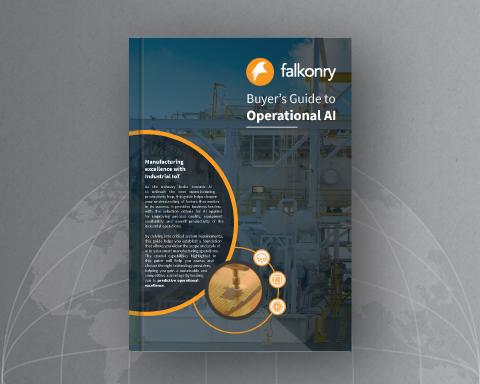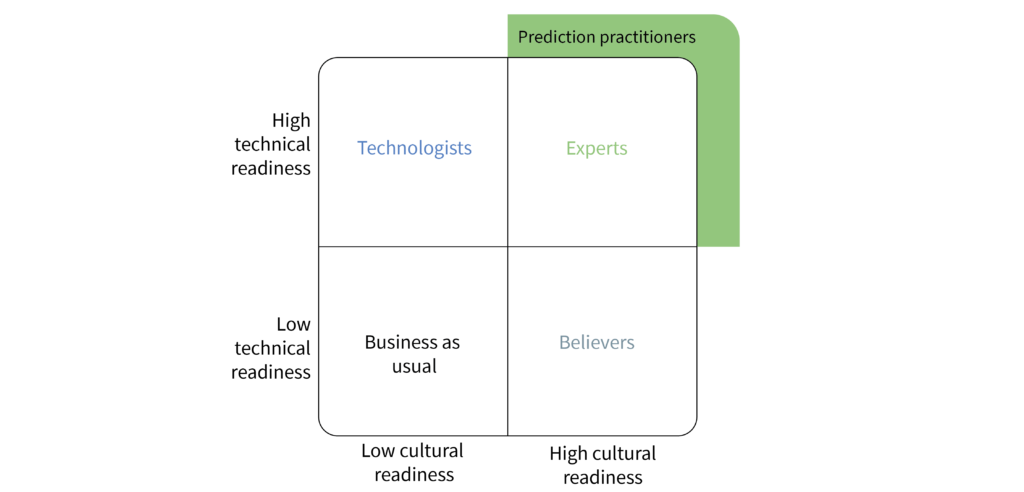Guide to IIoT Analytics
 Download Now
Download NowIn an earlier blog post, we wrote about building foundations on which predictive analytic capabilities could be built. The key idea was this:
Analytic capabilities are defined by the combination of organizational culture and technology which a company brings to bear in using the data it generates. Ultimately, the goal is to have enough strength in both culture and technology that productive business outcomes can be achieved.
– From Analytics Success is a Process
One way to think about building this foundation is to consider what technical and cultural capabilities an organization already has. With this understanding you can determine which actions to take to effectively move towards a predictive level of analytics capacity. Figure 1 below shows this idea.

To be clear, these quadrants should not be viewed as levels – we’re not suggesting that an organization move through the quadrants “mastering” each one on the way. There is no need to create an “expert” organization before predictive analytics can be used effectively. It is also worth saying that we don’t view any of the quadrants as necessarily better than any of the others. Each one simply reflects a starting point that comes with its own opportunities and challenges.
The first step in building a foundation is to determine where your organization is starting from. The table below provides a description of the characteristics of each quadrant to help in making this assessment.
The capabilities that your organization will need and be able to leverage will suggest the kind of foundation you should build. We’ll start looking at the various starting points and the path to becoming predictive practitioners in the next post.